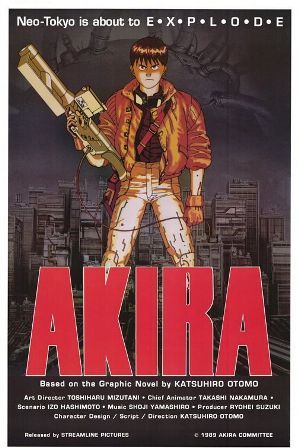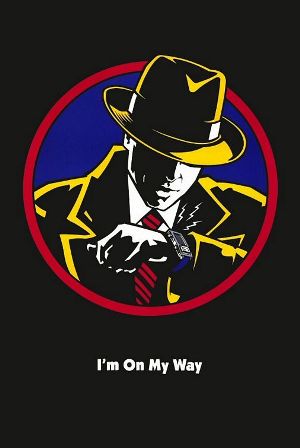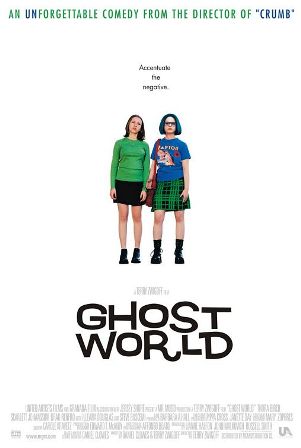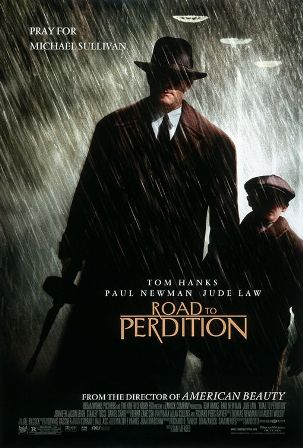CHICAGO – Patrick McDonald of HollywoodChicago.com appears on “The Morning Mess” with Dan Baker on WBGR-FM (Monroe, Wisconsin) on March 21st, 2024, reviewing the new streaming series “Manhunt” – based on the bestseller by James L. Swanson – currently streaming on Apple TV+.
The 10 Best Non-Superhero Comic Book Adaptations
CHICAGO – Comic books and graphic novels are certainly the closest artistic relatives to cinema, but are the mediums really meant to walk hand-in-hand? While Hollywood has certainly benefitted from the profitability of superhero franchises, securing vehicles for every caped demigod known to man, the popular taste of costumed devotees doesn’t always jive with that of the mainstream public.
Filmmakers like Zack Snyder are declared “visionaries” in some quarters simply for reproducing someone else’s vision panel-by-panel. Yet there are several motion pictures that have transcended the boundaries of their source material and found inventive ways of translating the form, content and spirit of a comic into a wholly cinematic language. So, with the industry buzzing over Edgar Wright’s visually kinetic adaptation of Bryan Lee O’Malley’s graphic novel series, “Scott Pilgrim vs. The World,” let’s take a look back at ten of the best comic book adaptations to date in chronological order (superheroes not included).

Akira
Photo credit: Streamline Pictures
“Akira”
If you haven’t been converted to the breathtakingly vivid world of Anime, here is an excellent place to start. Ôtomo based this landmark animated feature on his own six-volume manga series, which is set in a post-apocalyptic metropolis reminiscent of “Blade Runner.” A young gang member, Tetsuo, becomes the victim of a covert military operation. He’s subjected to a series of tests that unleash his hidden psychic abilities, which enable him to overcome his timidity and battle his oppressors, while at the expense of his sanity. From its opening shot depicting an explosion of nuclear proportions, “Akira” proves that the realm of hand-drawn animation offers the purest method in which to adapt illustrated fantasies, and allows artists to explore every corner of their imagined universe. The meticulously detailed three-dimensional landscapes set the stage for swirling action choreography that leaves the viewer utterly mesmerized. There’s enough realism in the imagery to make the flights of fancy all the more exhilarating. Ôtomo doesn’t shy away from his story’s extreme level of violence, which he captures in all of its vile beauty. The Hughes Brothers, who had considerable success with their film version of Alan Moore and Eddie Campbell’s “From Hell,” recently announced their plans to adapt Ôtomo’s masterpiece for live-action. Good luck with that one.

Dick Tracy
Photo credit: Touchstone
“Dick Tracy”
In an age of gritty blockbusters exposing the dark side of beloved heroes, Warren Beatty’s colorful valentine to Chester Gould’s comic strip is all the more refreshing in its old-fashioned innocence. Gould’s straightforward world of good and evil is lovingly recreated, with Beatty embracing every inch of its cheerfully hollow artifice. Released the summer after Tim Burton’s “Batman,” “Tracy” utilized elaborate sets, makeup and matte paintings to immerse viewers in the adventures of Beatty’s square-jawed, yellow-coated detective, as he tracks down gangsters whose grotesque faces externalize their inner psyche. Gould’s familiarity with urban cityscapes and his penchant for small-town values were effectively married in his strip, which he authored for over 45 years. Beatty stays true to the wholesomeness of Gould’s work, though his portrayal of Tracy is much more subdued. His performance is oddly affecting in scenes where he befriends a wayward Kid (Charlie Korsmo). The star-studded ensemble is uniformly superb, with the obvious standouts being Al Pacino (going for broke as the dastardly Big Boy Caprice) and Dustin Hoffman (hysterically funny as Mumbles). Even Madonna fares well as the femme fatale, particularly when belting Stephen Sondheim’s splendid songs.

The Mask
Photo credit: New Line
“The Mask”
Like “Akira,” John Arcudi and Doug Mahnke’s original comic book series of “The Mask” centered on an average joe who defies his inhibitions after acquiring superpowers (courtesy of an archaic mask) that cause him to wreak bloody havoc on bystanders, both guilty and innocent. Chuck Russell’s film version softens the premise by making the mask only as dangerous as the man behind it. And since that man is Jim Carrey, delivering his first successful film performance as lovable loser Stanley Ipkiss, the picture is a gas. It’s a lighthearted crowd-pleaser bursting with exuberant goofiness worthy of a Chuck Jones or Tex Avery cartoon. The film looks as hollow as “Dick Tracy,” but the elasticity of the visual effects are a perfect fit for Carrey’s manic physical comedy. When he gets excited, his eyes pop out of their sockets, literally. Plus, the movie features one of the best-trained canine scene-stealers in cinema history. Just look at the scene where Carrey’s dog helps his master break out of jail. Comic timing doesn’t get more impeccable.

Ghost World
Photo credit: UA
“Ghost World”
Here’s an example of a heightened comic world that feels as achingly human as real life. Comic book writer-illustrator Daniel Clowes nailed the whip-smart, insecure psyches of teenagers struggling to preserve their sanity in a suburban prison. They shield themselves from fellow inmates by utilizing a barrier of cynical wit and indifference. Yet they are ultimately as vulnerable and immature as the geeks they enjoy ridiculing. This is ideal subject matter for filmmaker Terry Zwigoff, whose love of underground comics led him to film an extraordinary 1994 documentary about legendary comic artist Robert Crumb, whose distinctive portrayal of flawed, sexually arrested outcasts has influenced Zwigoff’s work ever since. “Ghost World” captures the rich texture of Clowes’s work, both in terms of its quirky visuals and emotional depth. Thora Birch gives the defining performance of her career as Enid, the self-satisfied heroine who shares scathing private jokes with her faithful friend, Rebecca (Scarlett Johansson). And considering he’s the one man whose face looks like an R. Crumb sketch come to life, Steve Buscemi is wonderfully well-cast as the middle-aged record-collector gradually befriended by Enid.

Road to Perdition
Photo credit: Dreamworks
“Road to Perdition”
It’s a shame master cinematographer Conrad Hall isn’t around to lens any more graphic novel adaptations. He died shortly after completing his second collaboration with director Sam Mendes, and his exquisite work elevates every frame in this high-class picture. The film adapts Max Allan Collins’s graphic novel, which was itself based on the manga series, “Lone Wolf and Cub.” It’s a hard-boiled crime thriller with a touching father-son story at its center. Tom Hanks keeps the majority of his charm offscreen as Michael Sullivan, a mob-enforcer betrayed by members of his own crime syndicate, who’s forced to flee with his twelve-year-old son (Tyler Hoechlin), before seeking vengeance. The story recycles familiar tropes of westerns, Mafia sagas and even Greek tragedies. But Mendes revitalizes the material by fleshing out his characters, while keeping the audience firmly within his grip. There are at least half a dozen excruciatingly tense sequences in the film, many of which are inhabited by a bone-chilling Jude Law, as a killer so eerie-looking, he could give Cillian Murphy nightmares. And as Sullivan’s corrupt father figure, Paul Newman is utterly heartbreaking in his final screen role (if you don’t count “Cars”). But it’s Hall’s haunting imagery that holds the film together like glue. He has a way of shooting a rainstorm that causes viewers to literally feel the wetness until it seeps into their very bones.


